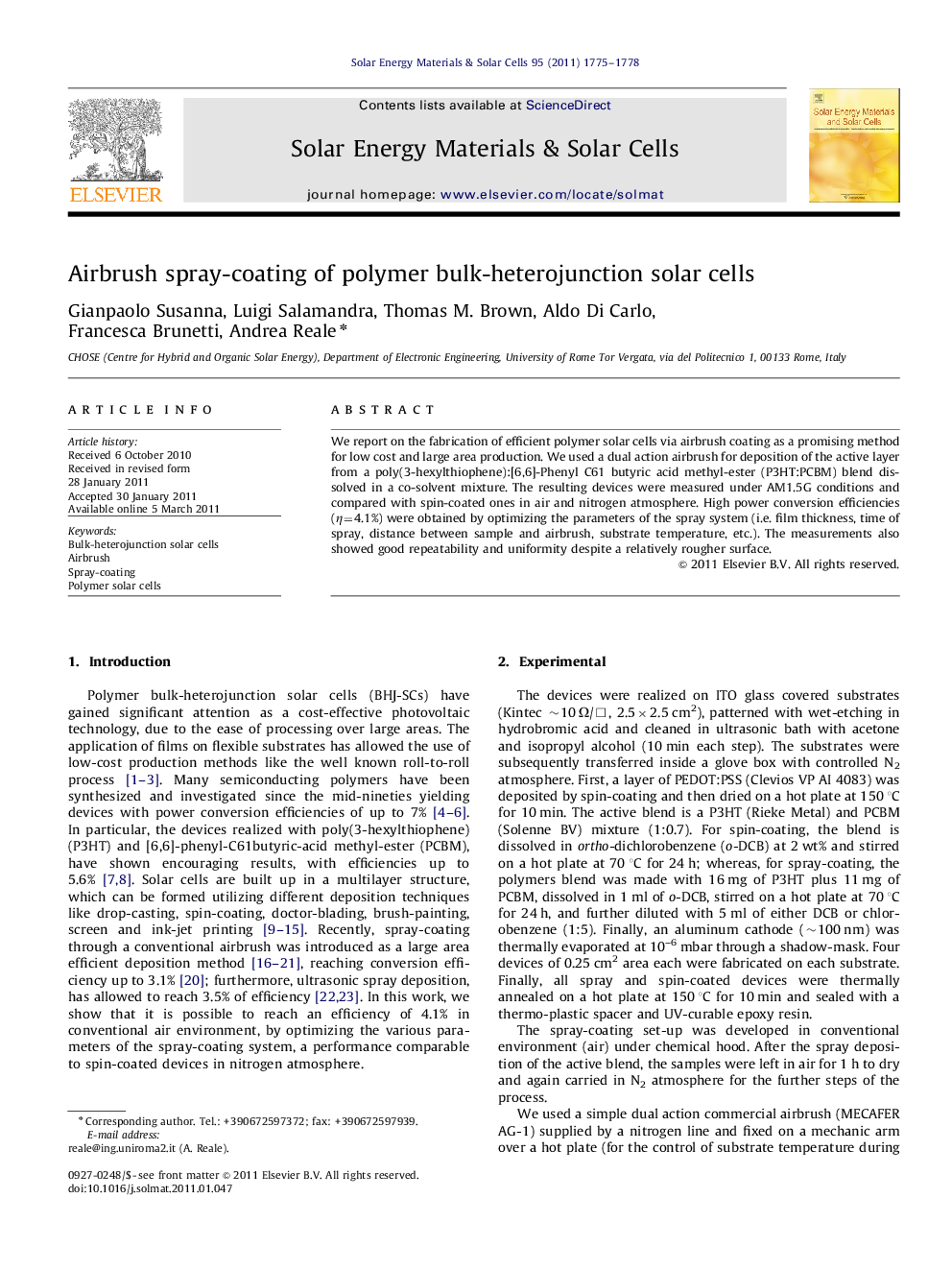| Article ID | Journal | Published Year | Pages | File Type |
|---|---|---|---|---|
| 78851 | Solar Energy Materials and Solar Cells | 2011 | 4 Pages |
We report on the fabrication of efficient polymer solar cells via airbrush coating as a promising method for low cost and large area production. We used a dual action airbrush for deposition of the active layer from a poly(3-hexylthiophene):[6,6]-Phenyl C61 butyric acid methyl-ester (P3HT:PCBM) blend dissolved in a co-solvent mixture. The resulting devices were measured under AM1.5G conditions and compared with spin-coated ones in air and nitrogen atmosphere. High power conversion efficiencies (η=4.1%) were obtained by optimizing the parameters of the spray system (i.e. film thickness, time of spray, distance between sample and airbrush, substrate temperature, etc.). The measurements also showed good repeatability and uniformity despite a relatively rougher surface.
Graphical AbstractHigh power conversion efficiencies (= 4.1%) obtained by optimizing the parameters of the spray system (i.e. film thickness, time of spray, distance between sample and airbrush, substrate temperature, etc.).Figure optionsDownload full-size imageDownload as PowerPoint slideResearch highlights► Efficient polymer solar cells via airbrush coating for low cost and large area production. ► World record for average power conversion efficiencies (η=3.9 %). ► Maximum PCE (η=4.1%) is the highest ever reported on Elsevier, Wiley, AIP, SPIE, IEEE Journals. ► Optimization of film thickness, role of solvent and of substrate temperature. ► Good repeatability and uniformity despite a relatively rougher surface.
